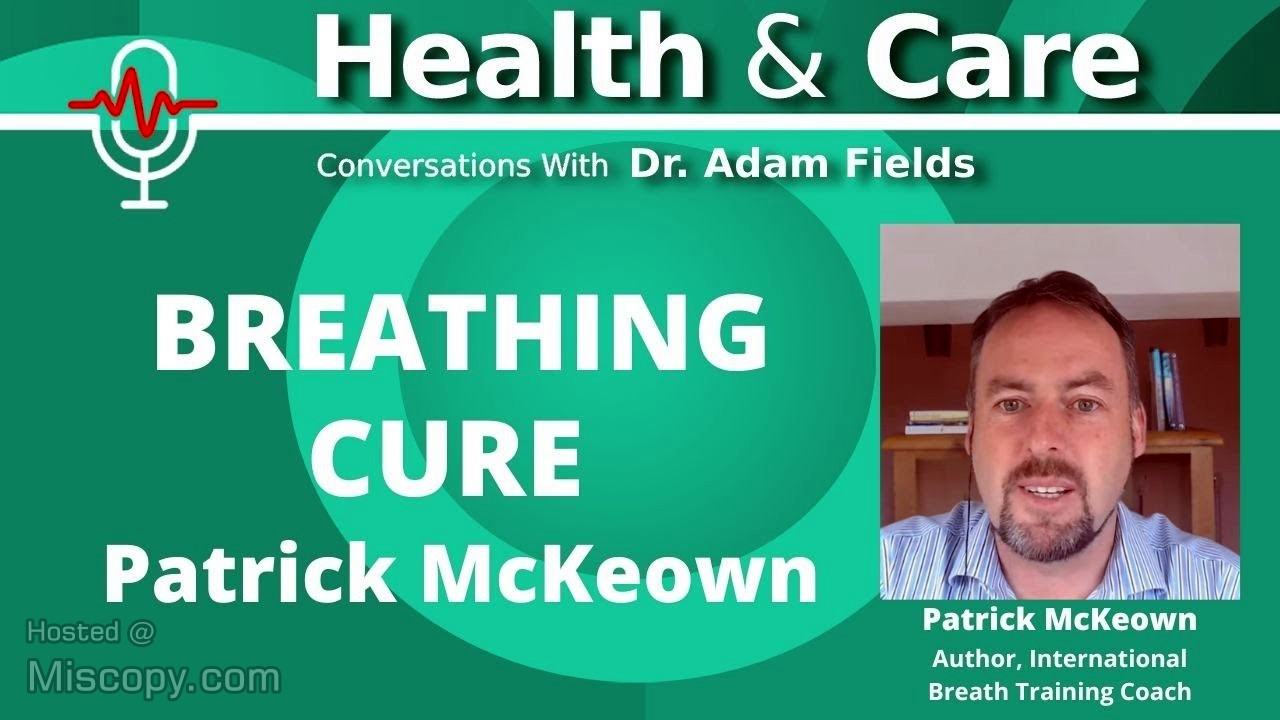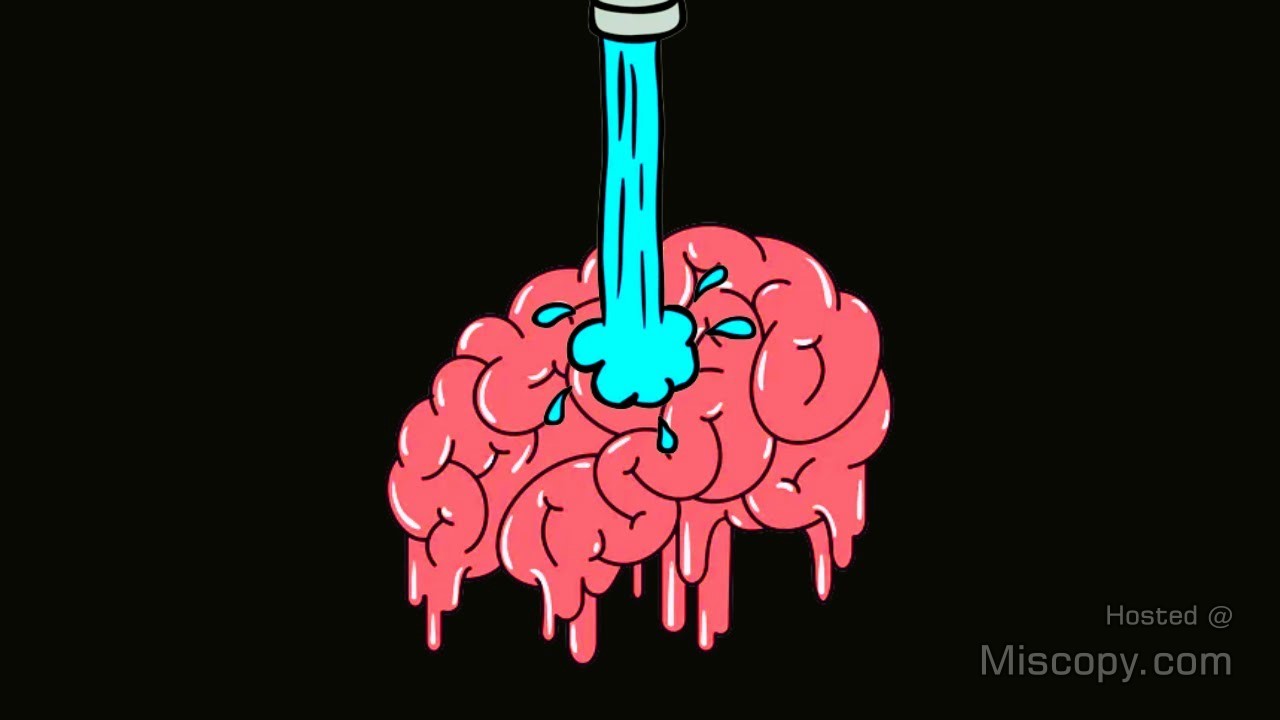In the “Breathing Cure” YouTube video with Patrick McKeown, the expert discusses the importance of proper breathing techniques for overall health and well-being. McKeown shares his personal experience of discovering the benefits of nose breathing and the Buteyko method after struggling with chronic nasal congestion, poor sleep quality, and asthma.
He emphasizes the significance of slow, light, and deep breathing, focusing on good diaphragm recruitment, and the role of carbon dioxide in oxygenation and blood flow. McKeown also discusses the interconnected dimensions of breathing, including the biomechanical, biochemical, and psychophysiological aspects, and the importance of addressing anxiety and improving rib cage mobility for better breathing.
The speaker encourages practicing proper nose breathing during rest, light and moderate physical exercise, and sleep to establish optimal breathing patterns. He also introduces tools like myotape to help individuals breathe through their nose and discusses the negative effects of mouth breathing, including its connection to sleep disorders, dental problems, and respiratory conditions.
Patrick McKeown is the director of Education and Training at Oxygen Advantage and the BCO Clinic International. McKeown is known for his expertise in breathwork and has written several books on the subject. He shares his personal experience of discovering the importance of proper breathing through Ukrainian Dr. Buteyko’s techniques. McKeown explains that when he read about Dr. Buteyko’s method in an article, he realized that his own breathing was heavy and shallow, contributing to his chronic nasal congestion, poor sleep quality, and asthma.
By practicing the nose and blocking exercise, he was able to decongest his nose and improve his circulation, leading him to explore the field of breathwork further. Despite the intuitively obvious health implications of improper breathing, McKeown notes that it is still often encouraged in breathing practices.
He notes that when people get stressed, their breathing often becomes faster, harder, and shallower, which can lead to imbalances in the autonomic nervous system. McKeown recommends practicing slow, light, and deep breathing, focusing on good recruitment of the diaphragm.
He explains that while the ideal respiratory rate for balancing the autonomic nervous system is between 4.5 and 6.5 breaths per minute, this measurement should be understood in terms of minute volume, or the total amount of air breathed in one minute, rather than just the number of breaths. By practicing slow, shallow breathing, we can improve our tolerance to carbon dioxide and reduce our sensitivity to it, leading to better overall breathing mechanics.
When discussing the importance of carbon dioxide in the breathing process and its role in oxygenation and blood flow throughout the body, McKeown explains that a drop in respiratory rate from 20 breaths per minute to six breaths per minute can be too drastic and cause discomfort, leading to air hunger. Instead, he suggests focusing on slowing down breathing relative to one’s comfort level to increase carbon dioxide in the blood and reap its benefits.
McKeown also shares the history of how breathing techniques in yoga changed from light, subtle breathing to full, deep breaths due to European influences, and how this shift can lead to overbreathing and its negative effects on the body.
The speaker explains how poor breathing patterns can affect the shoulders, head, knees, hips, and glutes, leading to dysfunctional movement. He also mentions that half of the population with lower back pain is documented to have dysfunctional breathing patterns, creating a feedback loop between the two conditions. The speaker encourages proper nose breathing during rest, light and moderate physical exercise, and sleep to establish optimal breathing patterns for long-term outcomes.
He also introduces a tool called myotape to help individuals breathe through their nose. The speaker then touches upon the topic of exercise and conscious breathing, suggesting that individuals should strive for unconscious breathing during physical activities but also practice conscious breathing exercises to improve overall breathing habits.
Patrick McKeown emphasizes that while breathing is generally an involuntary activity, it can be beneficial to focus on it to improve both mental and physical well-being. He suggests placing attention on the breath every now and then, rather than obsessing over it. McKeown also acknowledges that some individuals may experience anxiety when focusing on their breathing due to past experiences with anxiety or panic disorders.
He recommends simple breathing exercises, such as nose breathing during light exercise or yoga, to improve blood flow and oxygen delivery throughout the body. McKeown also emphasizes the importance of nasal breathing for optimal biomechanics and biochemical functioning, and suggests using tools like a belt to bring awareness to the diaphragm area.
Patrick McKeown then discusses the interconnected dimensions of breathing: biomechanical, biochemical, and psychophysiological. The biomechanical dimension focuses on the physical act of breathing, while the biochemical dimension relates to the body’s response to breathing, such as carbon dioxide levels. The psychophysiological dimension involves the mind-body connection.
McKeown warns against focusing solely on the biomechanical aspect of breathing, as it could negatively impact the other dimensions. For instance, if a student increases their tidal volume while slowing down their respiratory rate, they may breathe two to three times more air than required, leading to adverse effects on both the biochemical and psychophysiological dimensions.
McKeown suggests practicing the biomechanical aspect first, then gradually bringing the breathing back to normal to offset any loss of carbon dioxide. He also explains how mouth breathing and forward head posture are related, as the tongue needs to rest in the roof of the mouth for proper nasal breathing, which can help reduce the risk of forward head posture. The speaker briefly touches upon the importance of addressing anxiety and improving rib cage mobility for better breathing.
Mckeown also mentions the connection between obstructive sleep apnea and sleeping on the back, emphasizing its significance and the potential risks associated with it. He also refers to a study that shows nasal breathing improves visual spatial awareness.
Mckeown expresses his belief that breathing techniques have not gained widespread acceptance due to the language used to communicate them and their perceived woo-woo nature. He stresses the importance of nasal breathing and diaphragmatic breathing, which are the focus of his book, “The Breathing Cure.”
He mentions that up to 50% of children and 70% of adults may be mouth breathers, which can lead to various health issues including sleep disorders, dental problems, and respiratory conditions. The speaker also emphasizes the connection between breathing patterns and anxiety, stress, and heart health. He suggests that improving breathing patterns could lead to significant healthcare cost savings and improved overall well-being.
Patrick McKeown then discusses the importance of proper breathing techniquesy during physical activities like climbing. McKeown explains that mouth breathing reduces the efficiency of breath intake and encourages shallow breathing. Instead, nose breathing is recommended, as it allows for fuller breaths and helps improve the diaphragm’s strength.
He also suggests practicing breath holds to generate a sensation of breathlessness and increase tolerance to high CO2 and low oxygen levels. During mountain ascents, the reduced atmospheric pressure causes breathing muscles to work harder, making them more prone to fatigue. McKeown advises physical training with a closed mouth and breath holds at sea level to strengthen the diaphragm.
Additionally, he warns against fast and shallow breathing during ascent, as it increases dead space and results in a significant loss of air that doesn’t reach the small air sacs where gas exchange takes place. By slowing down breathing and taking fuller breaths, individuals can be more efficient in their oxygen intake.
He shares his personal experience of using soft, slow, and gentle breaths to calm himself before a high-pressure interview, which helped him regulate his heart rate and focus. McKeown emphasizes that this breathing technique is not only beneficial for individuals with anxiety but also for anyone in stressful situations. He explains that by slowing down the exhalation, we can stimulate the vagus nerve and release acetylcholine, which in turn slows down the heart rate.
McKeown also touches upon the reasons why many people have adopted mouth breathing and the consequences it has on our health, including the de-evolution of our species over the last 1500 years. He encourages us to re-evolve and focus on proper breathing techniques to improve our overall well-being.
Patrick McKeown and discusses the connection between mouth size, wisdom teeth, and breathing. McKeown explains that having enough space in the mouth for wisdom teeth can help keep the soft palate open and maintain the integrity of the tissue. He also mentions the importance of jaw development and the potential consequences of tooth extraction.
McKeown argues that dentists should reconsider their approach to identifying obstructive sleep apnea risk factors and the role of orthodontics in children’s jaw development. He suggests focusing on developing the jaws to accommodate all teeth and reduce the risk of sleep apnea. McKeown also shares tips on preparing for a cardiovascular workout by practicing nose breathing during the warm-up, focusing on slow and low breathing to increase CO2 and oxygen delivery to the muscles.
t the end of the interview with Adam Fields, Patrick McKeown discusses the importance of proper breathing for athletes, particularly for accessing flow states where attention moves simultaneously with time, resulting in effortless and playful performance. However, the doctors also agree that achieving such states may be challenging if one has dysfunctional breathing or sleep disorder breathing. Therefore, it’s crucial to address the physiology of breathing first before striving for optimal performance.




